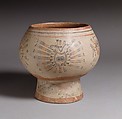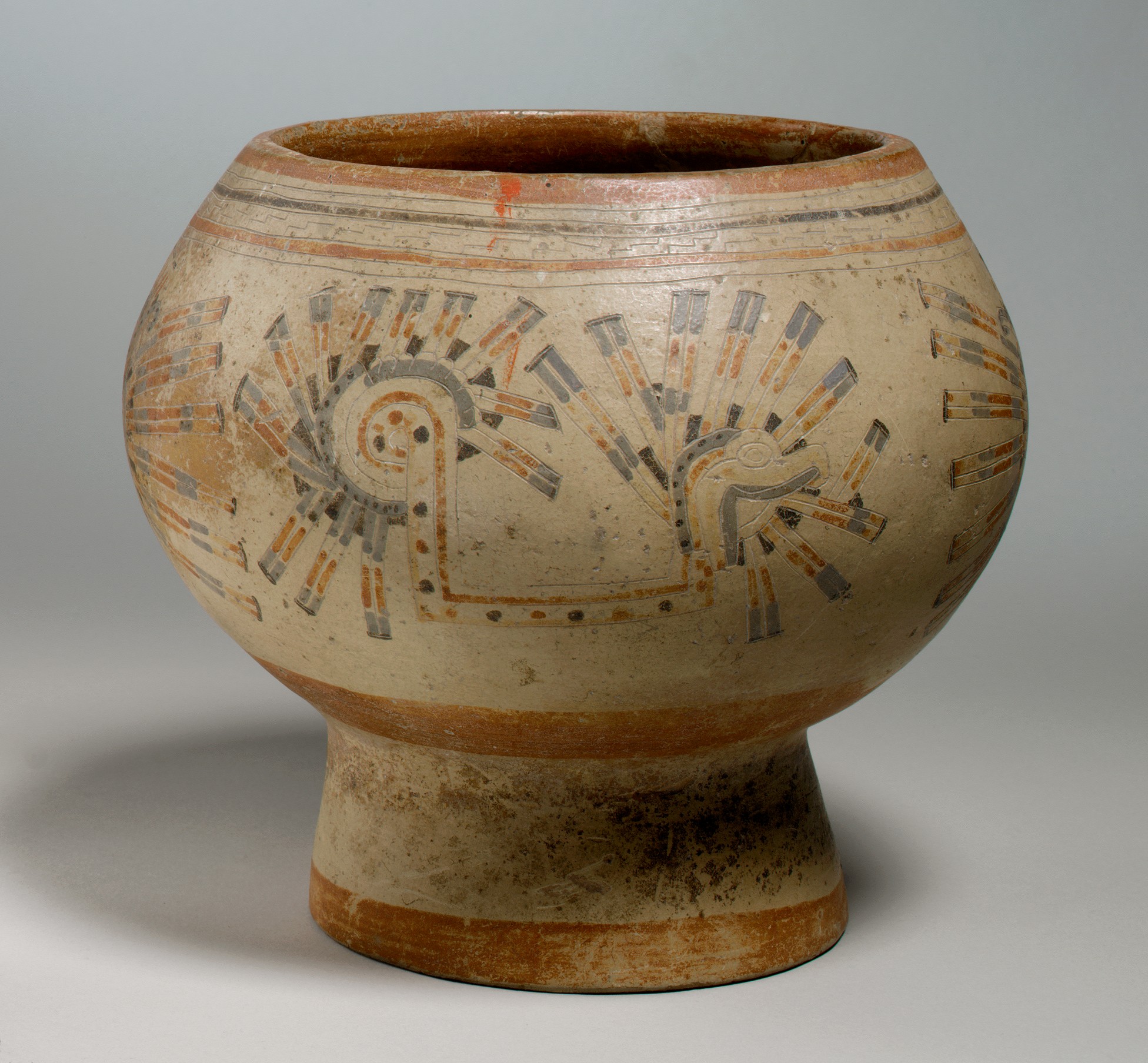Pedestal Bowl
Not on view
During the last few centuries prior to the Spanish conquest, numerous ceramic styles were produced in the Greater Nicoya region of Costa Rica that were strongly inspired in form and decoration by ceramic traditions in the Maya area and central Mexico. One of those styles, known as Vallejo, emphasizes white-slipped surfaces with polychrome designs outlined by incision, as seen on this pedestal bowl. The motifs decorating the outside of the vessel recall the geometric, brightly colored painting style—known as Mixteca-Puebla—popular in central Mexico at the time. Elements of the style and the religious concepts associated with it spread throughout Mesoamerica and northern Central America, probably by means of an exchange network of elite goods and perhaps even an influx of migrating Nahua-speaking peoples from northern Mexico. Local ceramic artists formulated their own interpretation of the foreign imagery and created a blend of figures and symbols that only vaguely resembles a Mesoamerican original. Two of the motifs, shown on opposite sides of the bowl, represent a version of the Mexican earth monster, a fanged, toadlike deity known as Tlaltecuhtli, believed to swallow human sacrifices and the heavenly bodies on their daily journey through the sky. Only the open profile mouth of the creature and one eye are recognizable as animal features. The figure's body and what are usually clawed hands and feet are abstract shapes. The second image on the vessel is that of the Feathered Serpent, also known as Quetzalcoátl. This ancient deity had numerous aspects and was worshipped by many Mesoamerican peoples. The snake's long body forms a U-shape ending in a sweeping curl; its profile head has a wide open maw with streamers emerging from it, symbolizing the split tongue and fangs. The feathers, an essential feature on Quetzalcoátl representations, are depicted as long, rectangular projections from the head and tail end.
This image cannot be enlarged, viewed at full screen, or downloaded.
This artwork is meant to be viewed from right to left. Scroll left to view more.



